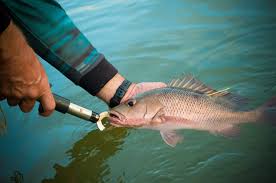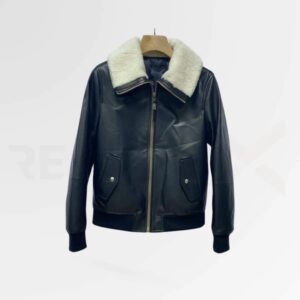
Introduction
Fish tagging systems are essential for studying marine life, tracking migration patterns, and improving fisheries management. Among the most widely used technologies are RFID (Radio-Frequency Identification), acoustic, and satellite tagging. Each method has unique advantages in terms of accuracy, cost, and application.
In this comprehensive guide, we’ll compare these three fish tagging systems, helping researchers, fisheries, and conservationists choose the best option for their needs.
1. RFID Fish Tagging: Affordable & Efficient
How RFID Fish Tagging Works
RFID tags use radio waves to transmit data to nearby receivers. These tags are either passive (no battery, activated by a reader) or active (battery-powered, longer range). They are commonly used in hatcheries, rivers, and small-scale fisheries.
Accuracy of RFID Tags
- Short-range detection (a few meters to 100+ meters for active tags).
- Best for controlled environments like fish farms or narrow river systems.
- Low interference, but limited to areas with RFID readers installed.
Cost of RFID Fish Tagging
- 1–
- 1–20 per tag (passive tags are cheaper; active tags cost more).
- Readers cost
- 500–
- 500–5,000, depending on range and functionality.
- Ideal for budget-conscious projects with fixed monitoring points.
Best Uses for RFID Tagging
- Stock assessment in aquaculture.
- Tracking fish movement in rivers and hatcheries.
- Small-scale research with fixed monitoring stations.
2. Acoustic Fish Tagging: Deep-Water Precision
How Acoustic Fish Tagging Works
Acoustic tags emit sound pulses detected by underwater receivers (hydrophones). These are widely used in oceanic and freshwater studies, especially for deep-water species.
Accuracy of Acoustic Tags
- Range varies (100m–1km+) depending on water conditions.
- High precision in 3D movement tracking (depth, latitude, longitude).
- Requires a network of receivers, limiting coverage to monitored areas.
Cost of Acoustic Tagging
- 200–
- 200–500 per tag (higher due to battery and durability).
- Receivers cost
- 1,000–
- 1,000–20,000 (deployment and maintenance add expenses).
- More expensive than RFID but better for open-water studies.
Best Uses for Acoustic Tagging
- Marine migration studies (sharks, tuna, salmon).
- Behavioral research in lakes and coastal zones.
- Fisheries management in large water bodies.
3. Satellite Fish Tagging: Global Tracking for Pelagic Species
How Satellite Tagging Works
Satellite tags (e.g., PSATs – Pop-up Satellite Archival Tags) record data and transmit it to satellites when the tag surfaces. Used for long-distance migratory species like tuna, sharks, and sea turtles.
Accuracy of Satellite Tags
- Global coverage, ideal for pelagic (open ocean) species.
- Less precise than acoustic tags (location accuracy ~100m–1km).
- Data gaps if the tag doesn’t surface frequently.
Cost of Satellite Tagging
- 1,500–
- 1,500–4,000 per tag (most expensive due to satellite transmission).
- No receiver costs, but high per-unit price limits large-scale studies.
- Best for high-budget, long-term migration research.
Best Uses for Satellite Tagging
- Tracking transoceanic migrations.
- Studying endangered species (whales, sea turtles).
- Climate impact studies on marine life.
Comparison Table: RFID vs. Acoustic vs. Satellite Tagging
| Feature | RFID Tagging | Acoustic Tagging | Satellite Tagging |
| Range | Short (1m–100m) | Medium (100m–1km) | Global |
| Accuracy | High (near reader) | Very High (3D tracking) | Moderate (~100m–1km) |
| Cost per Tag | 1–
1–20 |
200–
200–500 |
1,500–
1,500–4,000 |
| Receiver Cost | 500–
500–5,000 |
1,000–
1,000–20,000 |
None (satellite-based) |
| Best For | Hatcheries, rivers | Coastal/oceanic studies | Open-ocean migrations |
Which Fish Tagging System Should You Choose?
Choose RFID If:
✅ You need low-cost, high-volume tagging.
✅ Your study is in a controlled environment (rivers, farms).
✅ Real-time tracking at fixed points is sufficient.
Choose Acoustic If:
✅ You need detailed movement data in open water.
✅ Your budget allows for higher tag and receiver costs.
✅ You’re studying deep-water or coastal species.
Choose Satellite If:
✅ You’re tracking long-distance migrations.
✅ Your research involves pelagic or endangered species.
✅ You have significant funding for high-end tags.
Future Trends in Fish Tagging Technology
- Hybrid systems (e.g., acoustic + satellite for better coverage).
- Smaller, longer-lasting tags with improved battery life.
- AI-powered data analysis for better migration pattern predictions.
Conclusion
Each fish tagging system—RFID, acoustic, and satellite—has its strengths. RFID is cost-effective for small-scale studies, acoustic provides precision in open water, and satellite enables global tracking. Your choice depends on budget, species, and research goals.
For fisheries, conservationists, and researchers, selecting the right fish tagging system ensures accurate data and efficient resource use. Stay updated with evolving technologies to enhance marine studies and sustainable fishing practices.





